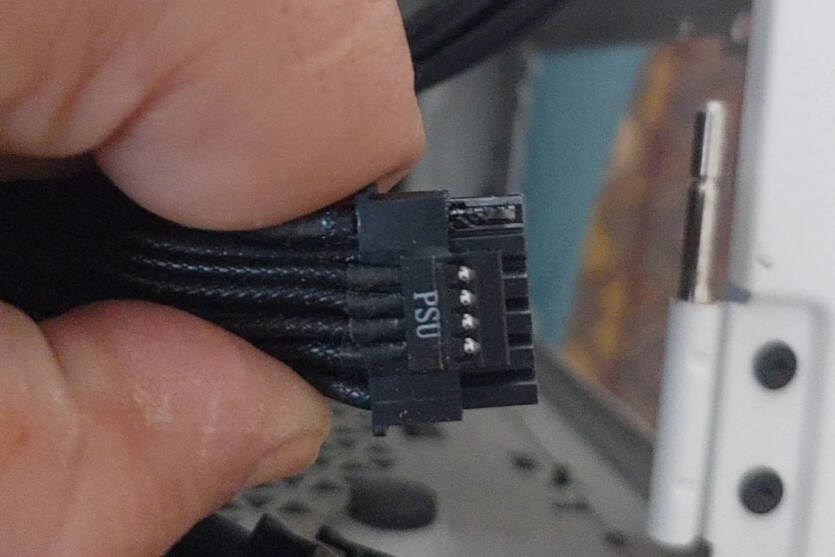
The other day we told about an unfortunate case when the power connector of an NVIDIA RTX 5090 FE video card melted with a third-party adapter. But it seems that the days of melting connectors are back, as this was not the only such case.
There are more and more reports of RTX 5090 FE graphics cards melting their power cables, despite Nvidia’s claims that the problem that previously plagued the RTX 4090 should not happen again. But while the community is discussing these cases with the RTX 5090 and its 575W TDP, a post was made on Reddit where u/Ambitious_Ladder1320 shared photos of his Asus RTX 5080which also suffered damage due to a melted connector during normal use.



According to the user, his RTX 5080 graphics card turned on a red light while the PC was running, which usually indicates that the pins are not connected correctly. He checked all connections and made sure the cables were connected correctly. For diagnostics, he turned off the computer, disconnected and reconnected the video card cable.
At first glance, this seemed to help, as the warning light disappeared. However, immediately after that, the display resolution and refresh rate decreased, and the video card switched to PCIe x3 mode. The user turned off the computer again and decided to recheck all the connections — that’s when he noticed that the video card’s power connector was melted on the side of the power supply, while the connector on the video card itself remained intact.
The user noticed that his power supply was an Asus ROG Loki. It is interesting that this particular PSU is mentioned in other cases of cable melting on RTX 5090.
However, the problem may not be only with this particular PSU. Some users suggest that the overheating is caused by the 12VHPWR connector and its new 12V-2×6 version. If this is true, then the cable design needs to be completely revised, because the RTX 5080 has a lower TDP than the RTX 5090 and even the RTX 4090, but still faces the same problem.
So far, there is no official confirmation whether this problem is due to improper connection or a design flaw in the power cable.
If the problem is indeed a design flaw, then device manufacturers should reconsider the design of cables and connectors to avoid similar incidents in the future. This is especially important given the increasing power consumption of modern graphics cards.
A possible solution could be, for example, the proprietary Asus connection, which completely eliminates external power cables. However, implementing such radical changes takes time, and you shouldn’t expect quick support from other manufacturers.
Source: tomshardware

Spelling error report
The following text will be sent to our editors: